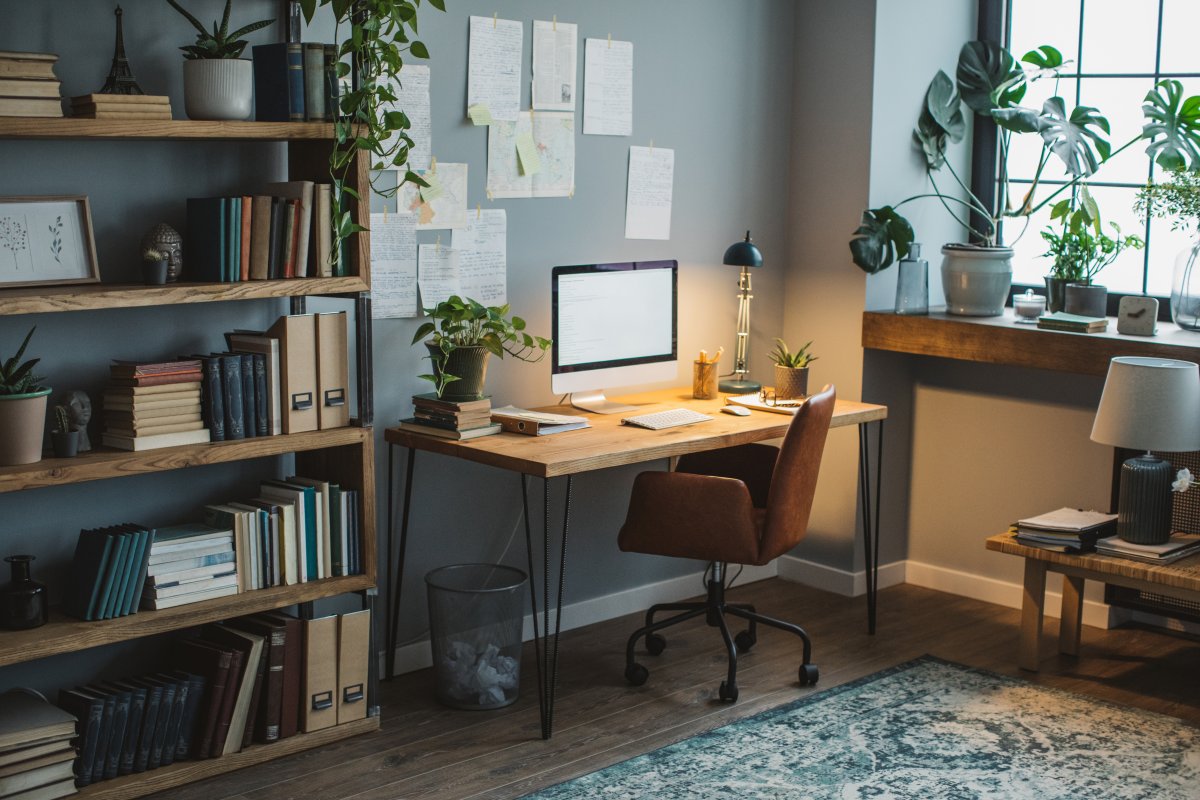

We may earn revenue from the products available on this page and participate in affiliate programs. Learn More ›
With so many people now working remotely, creating an effective home office layout is more important than ever. Whether you’re looking for small home office ideas or designing an office space in a dedicated room, it can be tough to visualize a productive workspace that suits all of your needs.
That’s why we spoke to an interior design expert to land on the eight solid home office layout ideas below, which should suit just about any room or personality—from those looking to bring home the formal feel of an office to creatives who want to carve out a productivity space without sacrificing coziness.
1. Desk Facing the Window
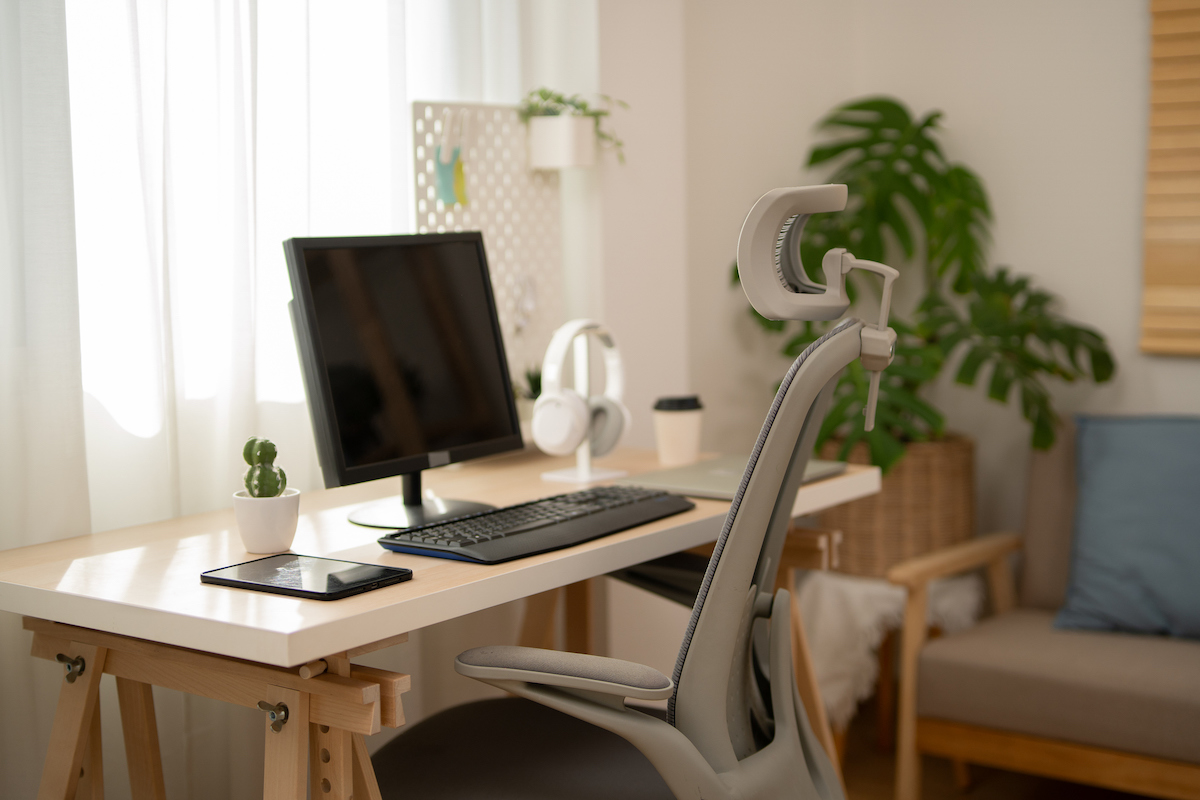
According to Archival Designs Lead Interior Designer Ana Coddington, positioning your desk where it gets ample sunlight (such as in front of a south-facing window) can significantly boost your brainpower. “Natural light has been shown to boost mood, improve focus, and even help with productivity,” she explains.
In this layout, position your desk in front of your preferred home office window. Place any storage like bookshelves or filing cabinets along the wall behind you, creating an efficient U-shaped workflow that maximizes the natural light while maintaining easy access to the things you need.
2. L-Shaped Corner Desk
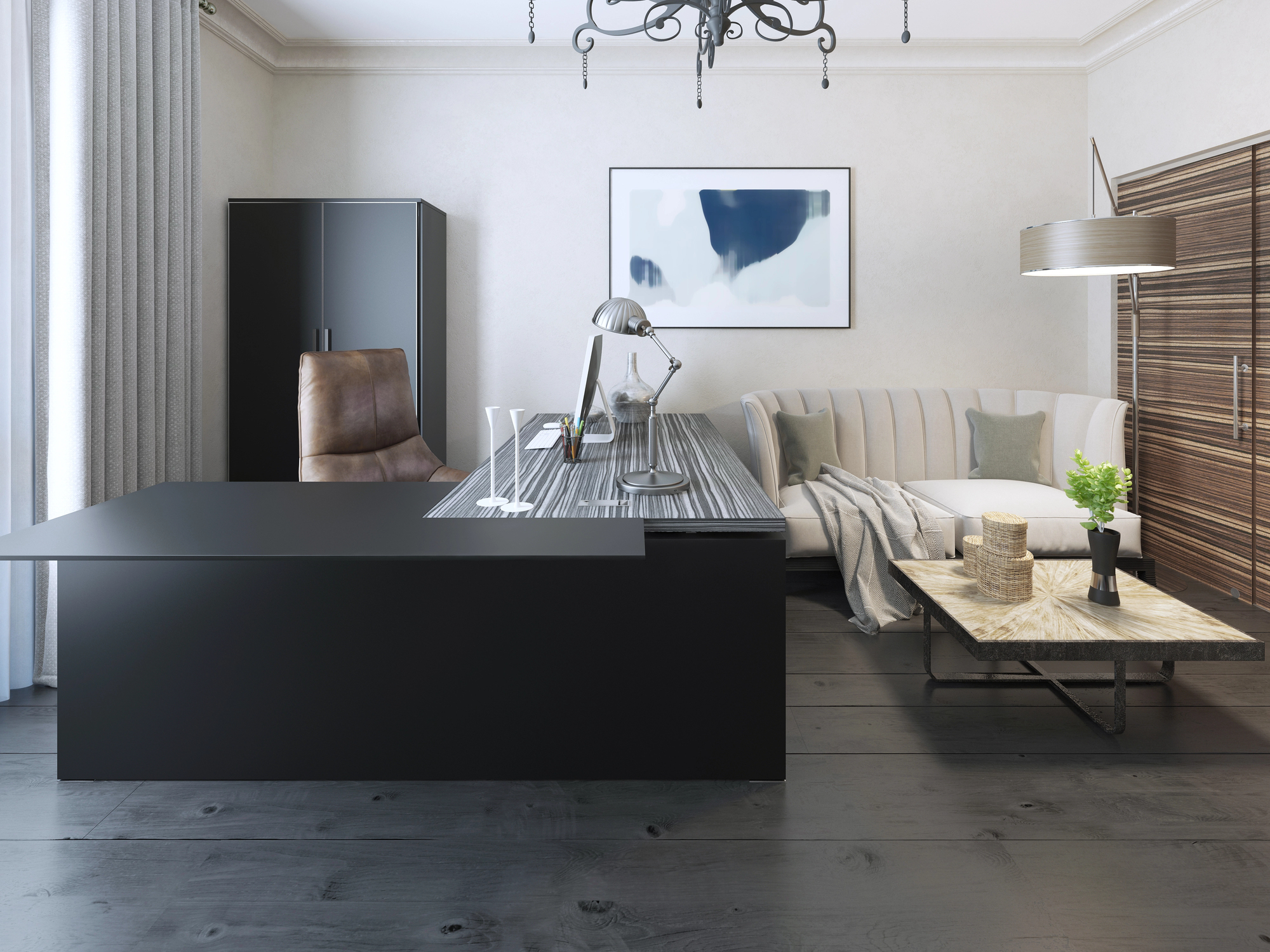
Maximize a room’s corner space with an L-shaped desk configuration. This office layout design provides distinct zones for computer work and paperwork while keeping everything within arm’s reach. “Having everything close helps you stay focused and productive,” says Coddington.
Position your primary monitor on one wing and create a secondary workspace on the other. Add vertical storage above both desk sections to maximize space efficiency while maintaining an open feel.
3. Room Divider Layout
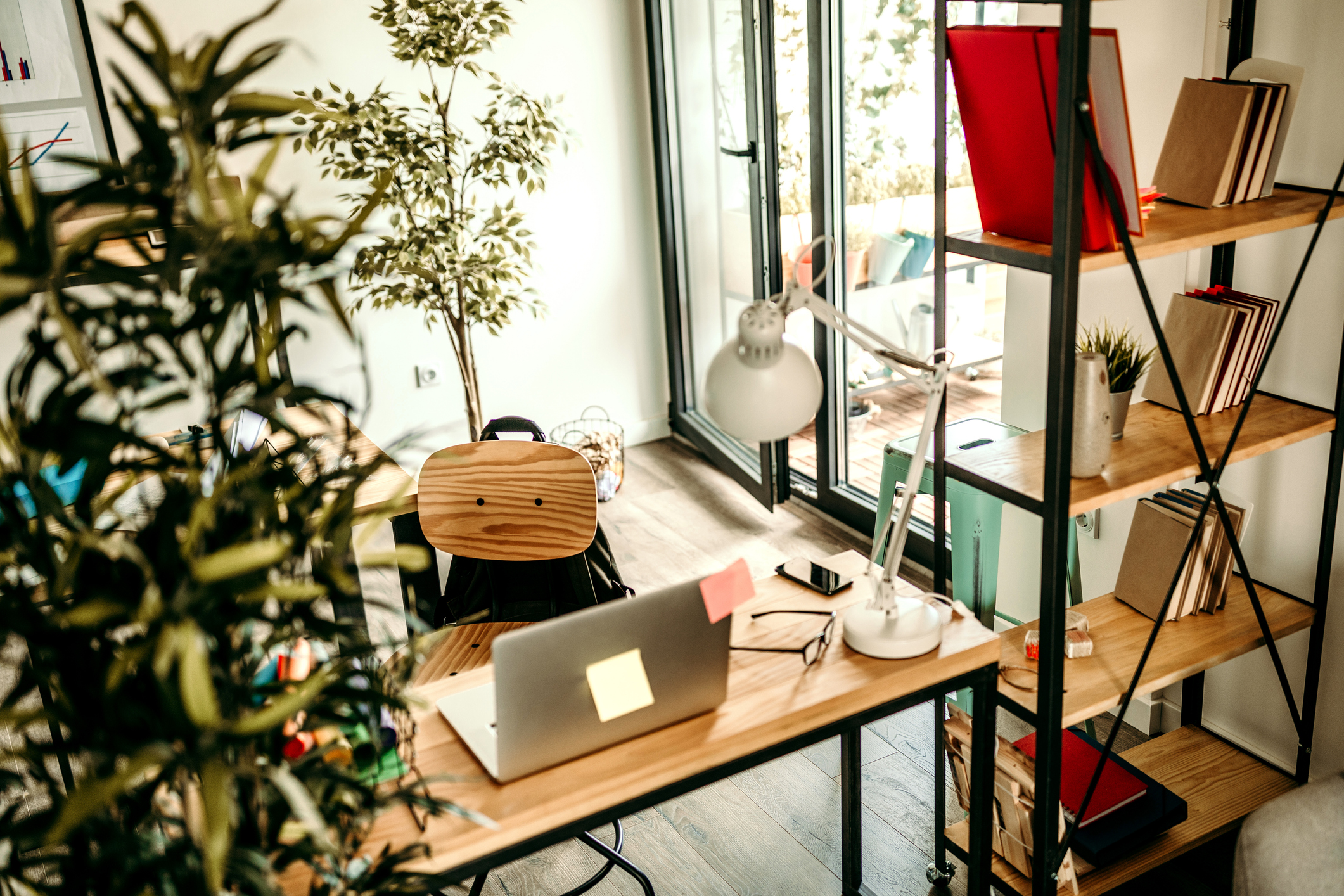
If you need to create a home office nook in an open-plan living space, this could be the perfect solution. This layout uses a double-sided bookshelf or desk as a room divider, effectively creating two rooms within a larger space. Position the desk so it faces into your designated office area.
Even if you’re working with a small office space, try to keep it clear and open. Coddington advises, “A clean, open layout helps create a sense of flow and makes it easier to focus on the task at hand.”
4. Galley Office
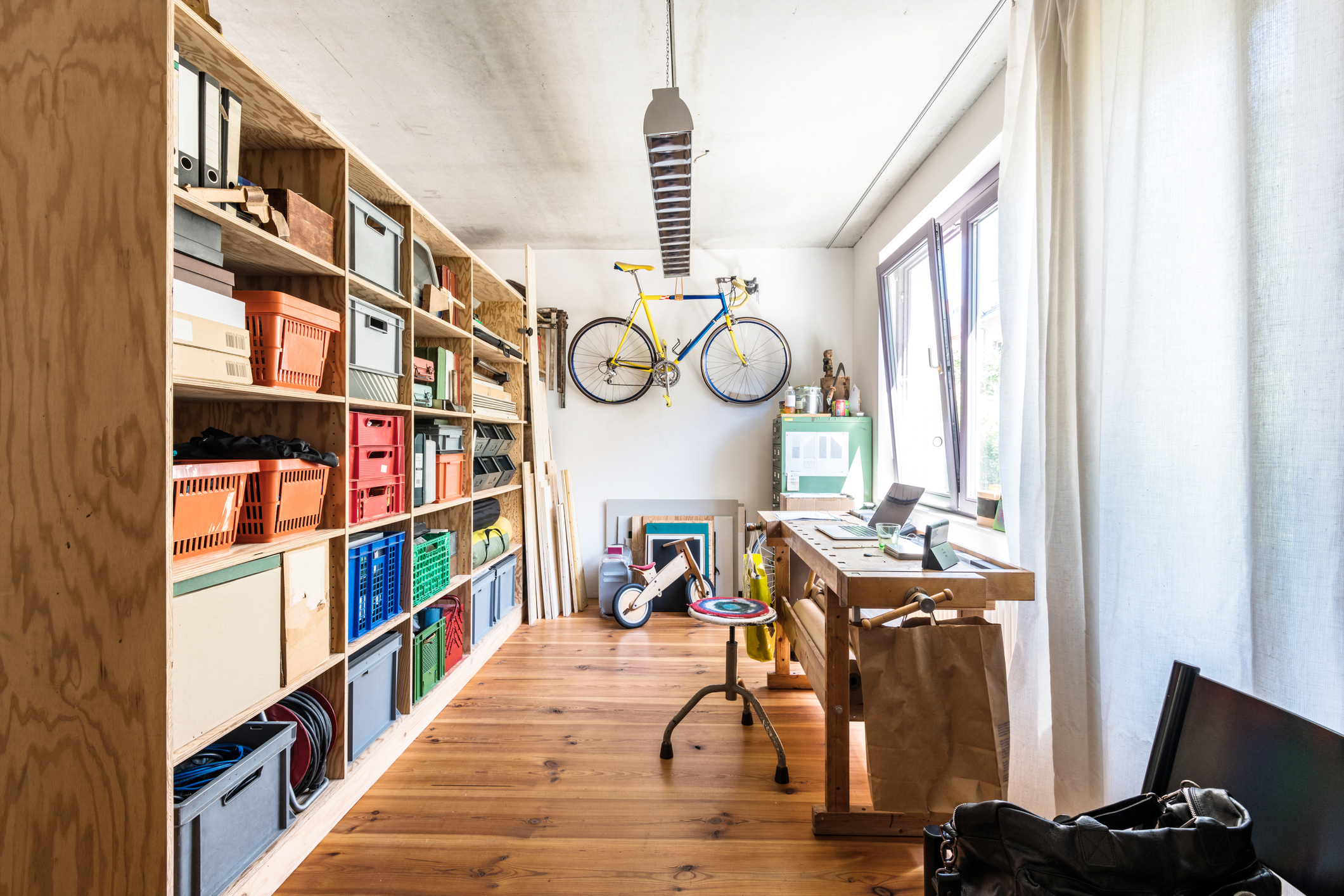
For narrow rooms or converted hallway spaces, arrange your workspace in a galley-style layout. Start by positioning a slim desk along one wall with wall-mounted storage above. Smart office interior decoration, like floating shelves and wall-mounted organizers, will keep this narrow layout feeling spacious.
“Having multiple places to store your essentials—like cabinets, shelves, or baskets—helps prevent clutter from piling up,” adds Coddington. On the opposite wall, install a bulletin board or whiteboard for planning.
5. Virtual Meeting Space
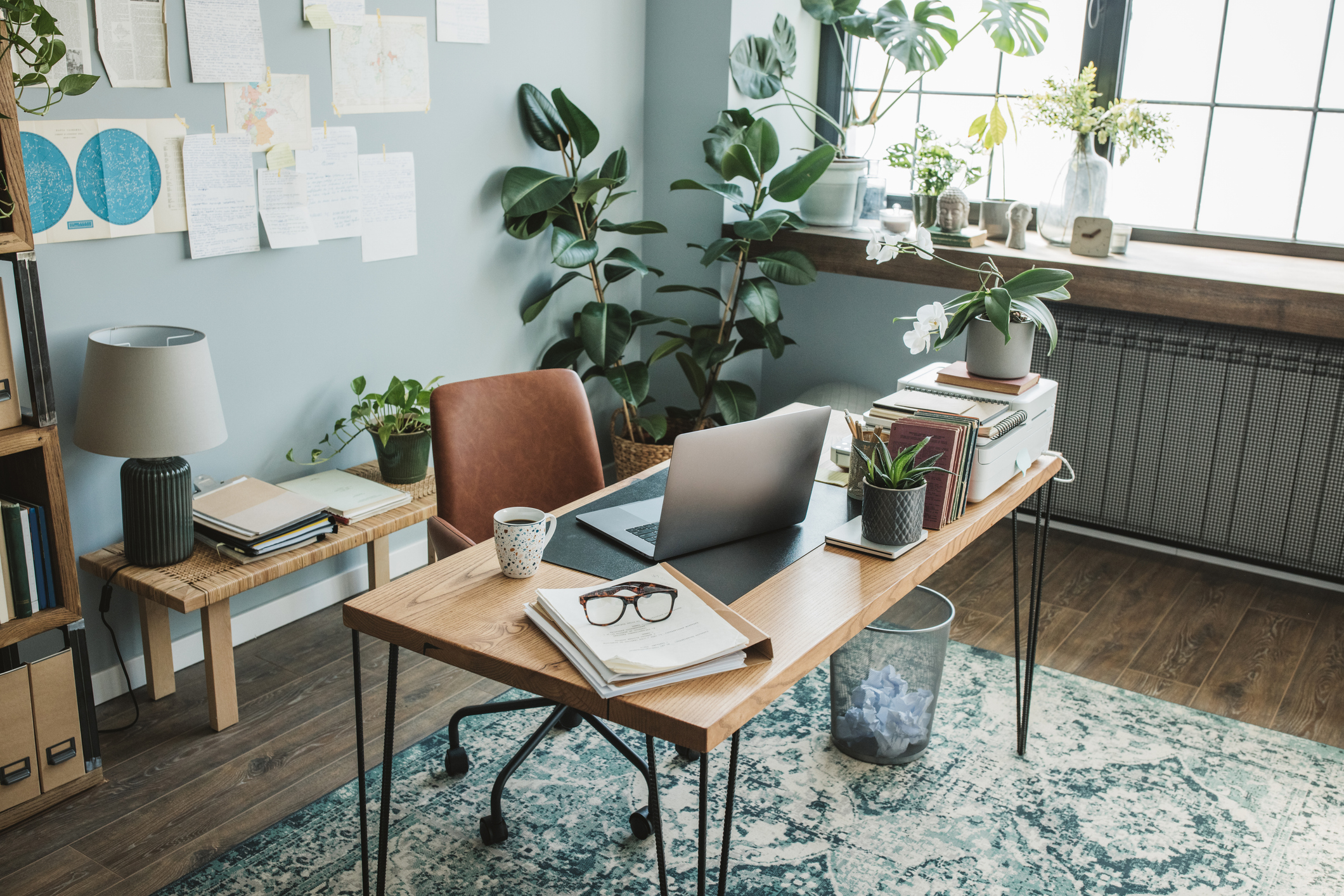
Design a space that transitions easily from focused work to video calls or client meetings. Position your desk facing the room’s entrance, with a wall behind you for a professional video call background.
You can even add a small round table or seating area to one side for in-person meetings or as an alternate workspace. This layout works particularly well in larger home offices where you need to accommodate both solo work and collaboration.
Some suitable office decorating ideas for this layout could include using a cohesive color scheme and professional artwork to create a polished backdrop for video calls.
6. Built-In Desk
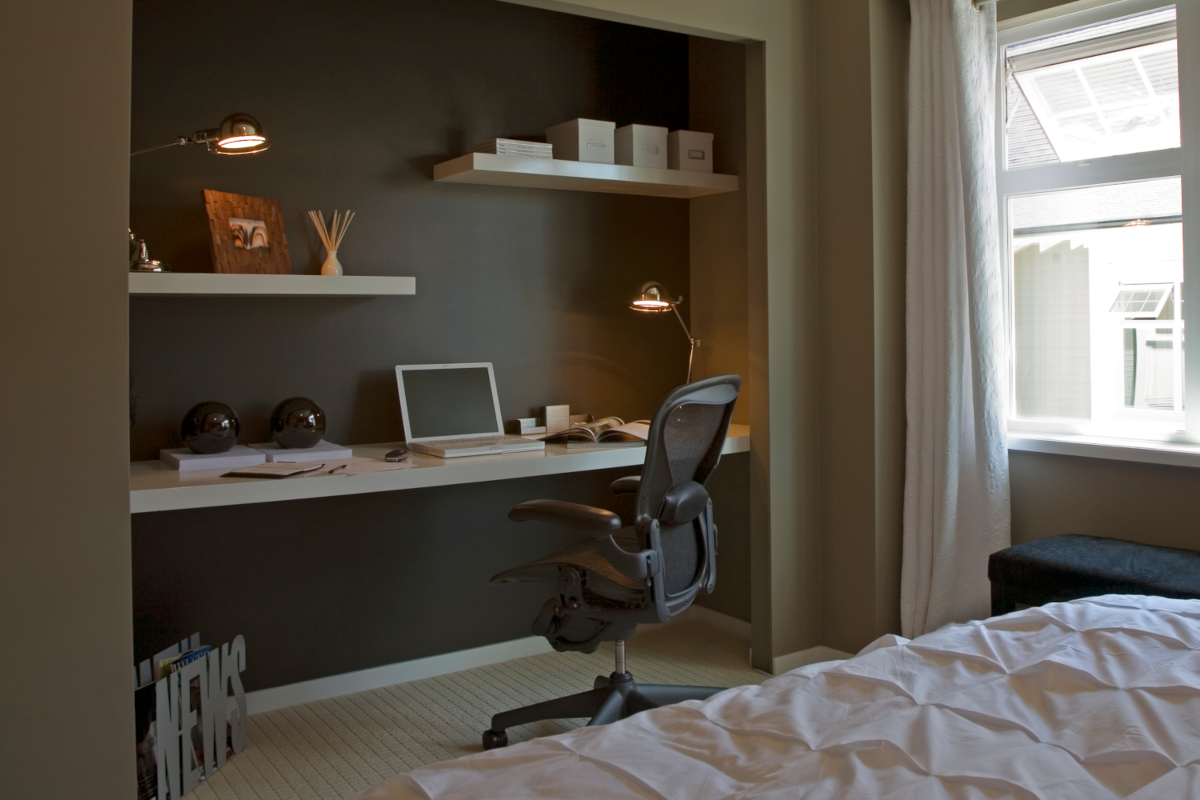
Transform an entire wall into a functional workspace by installing a built-in desk and storage system. This layout maximizes vertical space while maintaining an open floor plan. The desk area occupies the center, flanked by storage cabinets below and shelving above.
7. Alcove Office
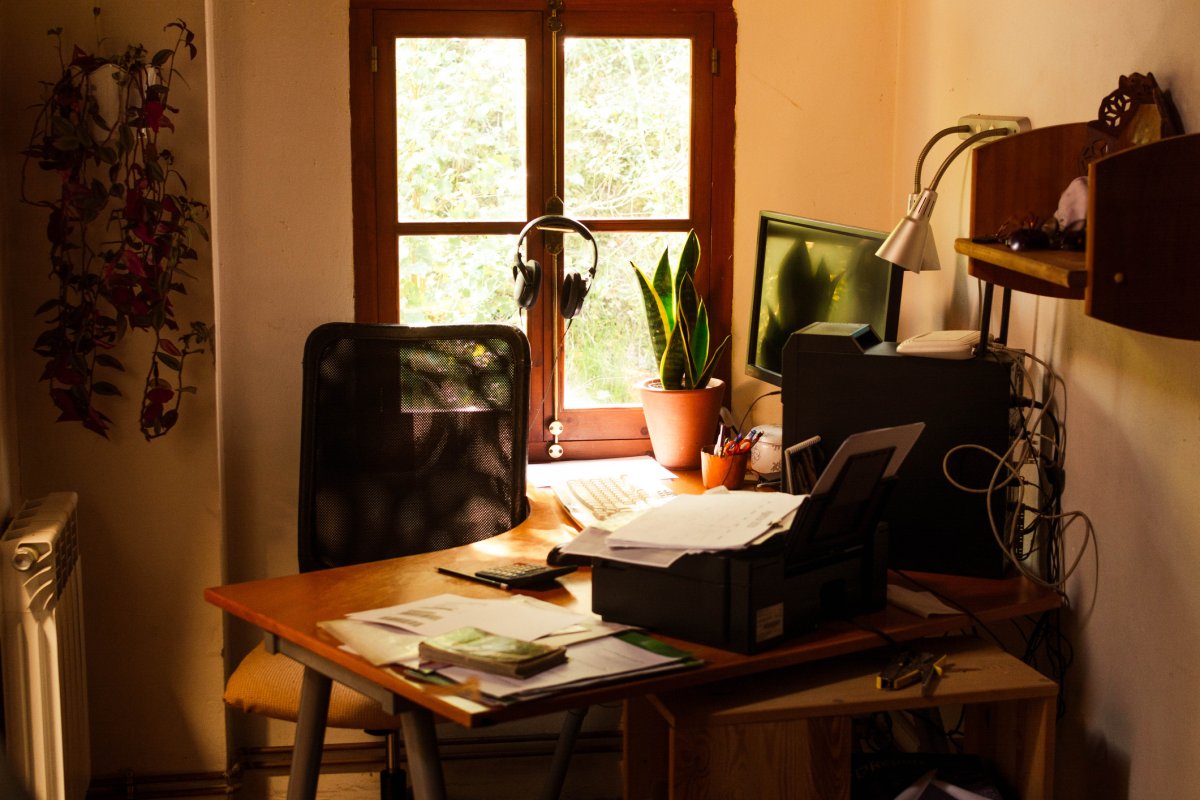
Make use of an unused closet or alcove by converting it into a compact workspace. Remove the doors and install a wall-mounted desk or floating shelf at the appropriate height. Add task lighting and floating shelves above for storage. Focus on home office essentials in this compact setup to make the most of limited space.
This “cloffice” layout creates a dedicated workspace that can be easily hidden when needed, perfect for homes where space is at a premium.
8. Captain’s Chair
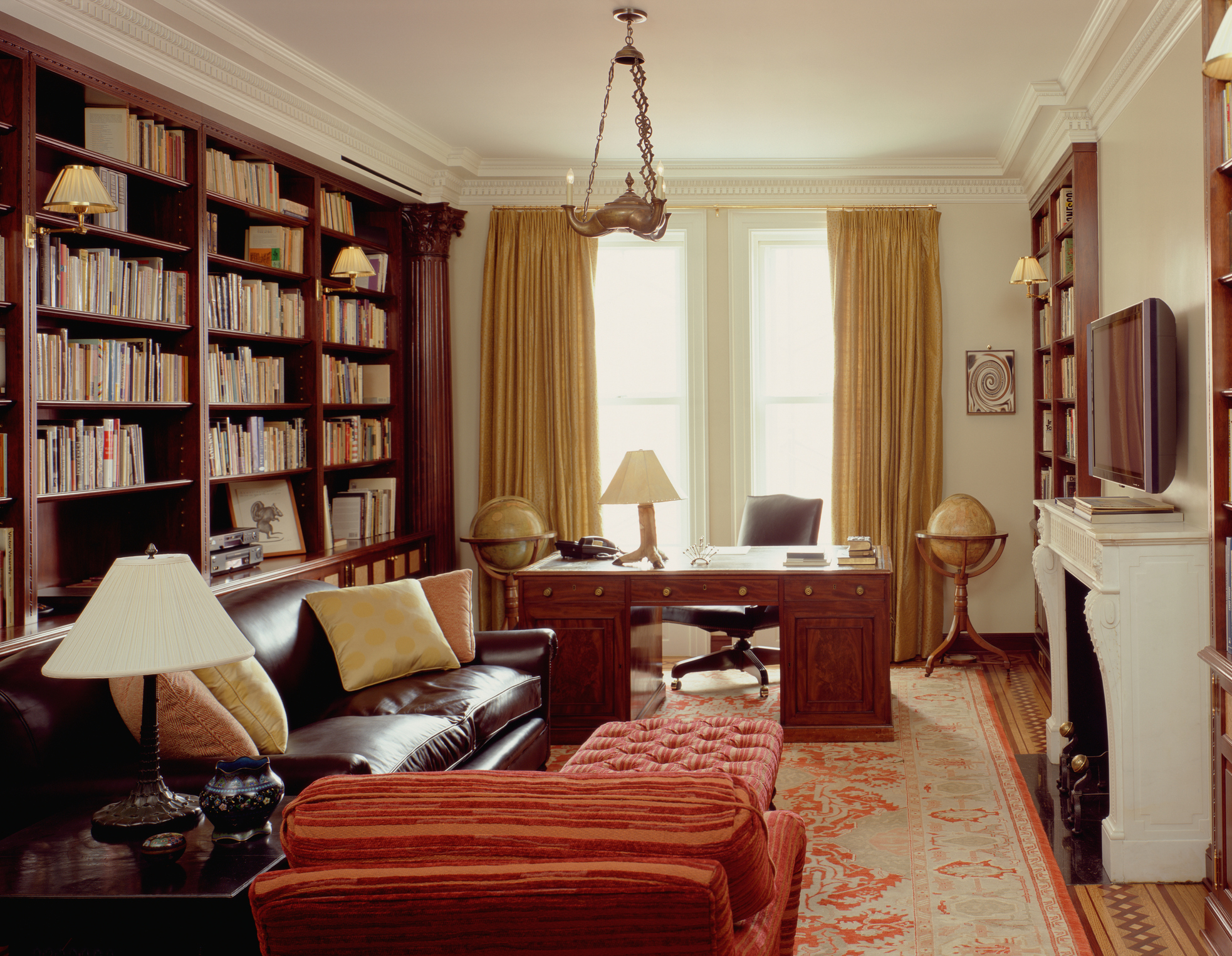
Position your desk to face the door from across the room—a layout also known as the “command position.” This traditional office arrangement allows you to face the open room while sitting in your office chair rather than facing a wall.
For a backdrop that frames your workspace (and looks great on video calls), consider placing storage cabinets or bookshelves along the wall behind your desk.
